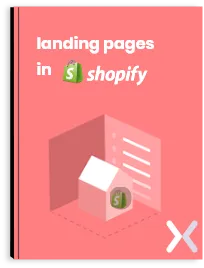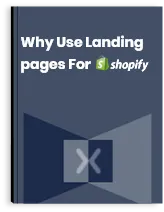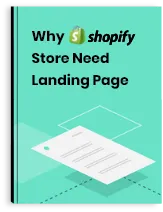The most powerful reason to use landing pages is that they can be carefully-customised to your specific campaign, conversion goals, and type of visitor.
In this case, Facebook advertising is a huge driver of traffic and revenues for eCommerce companies - and the number one channel for 72% of B2C businesses. If you have an online store, Advertising on Facebook is practically inevitable.
But many ( if not most) companies simply drive traffic to one, generic detail page or, worse (gasp!) to their home page. This treats all visitors the same - when, in fact, your visitors take multiple steps in the journey towards purchasing that require a completely different approach.
The better alternative? Send ad traffic to campaign-specific pages. You can create multiple landing pages to segment your traffic and connect with your audience’s needs. Here are the different stages of awareness for Facebook ad traffic - and how they influence the design and approach of your landing pages.
These are the prospects with no awareness of your brand or products. Cold traffic from Facebook typically needs more information before considering a purchase.
Length: Long-form
Design: Focus on immersive, tactile product images and videos
Objective: Educate visitors and build desire for your unique product benefits
Secondary Objective: Build trust with social proof, reviews and testimonials
Conversion Goals: Low-investment - discount coupons, free trials, limited offers Landing pages for cold traffic should focus on weaving a compelling story about your product and its unique benefits. The visitor knows nothing about your brand so a process of education and trust-building is key to developing the desire to take the next step.
Retargeting campaigns engage previous visitors of your site. These people have some familiarity with your products, but may be hesitating to make the purchase.
Length: Short to medium-form
Design: Simple and to-the-point
Objective: Compel visitors to finally take action
Secondary Objective: Overcome objections, fears, and doubts
Conversion Goals: Time-sensitive, discounted purchases, tripwires (low-cost products), incentivised email opt-ins Landing pages for retargeted traffic are more straightforward with a goal of addressing key conversion barriers and persuading the visitor to finally take action. This may be in the form of making a small purchase before your main product offering.
How do you define ‘purchase-ready’? These are people who have shown interest or readiness to purchase. This could be through actions like add-to-carts, number of pages visited, and coupon opt-ins.
Length: Short-form
Design: Product detail page
Objective: Drive prospects to finally make a purchase
Secondary Objective: Address any remaining conversion barriers
Conversion Goals: Add to carts and product purchases Landing pages for purchase-ready traffic have a simple goal - to make it as easy as possible for visitors to purchase the product they want. These should be stripped-down, hyper-focused pages with a clear emphasis on your call-to-action.
People who have made a purchase before. It’s far easier to sell to existing customers than cold traffic. Facebook campaigns for existing customers may show recommended complementary products or exclusive rewards to build loyalty.
Length: Short-form
Design: Product detail page
Objective: Increase customer lifetime value
Secondary Objective: Reward brand loyalty
Conversion Goals: Product purchases, loyalty reward opt-ins Landing pages for existing customers should keep existing customers engaged with your brand - and can take a softer approach in terms of sales.
Need help creating custom landing pages? Apexure specialises in designing conversion-optimised, hyper-targeted Shopify landing pages for eCommerce companies. Get in touch for a free quote.





How much should I pay for a Shopify Landing Page?
+Landing pages are the secret sauce of the world’s most successful eCommerce companies. They allow for hyper-focused marketing that can engage specific customer segments and drive them to take action.
Why do landing pages convert better than product pages?
+eCommerce is growing at an unprecedented rate. A paradigm shift is happening in terms of how shoppers buy products - resulting in a near tripling of growth in online sales (from 2019 to 2020).
How Does Facebook Ad Traffic Influence Your Landing Page Design?
+The most powerful reason to use landing pages is that they can be carefully-customised to your specific campaign, conversion goals, and type of visitor.

Star rating with 30 client reviews on Google

Shopify landing-pages project delivered

Experience building Shopify Landing Pages
